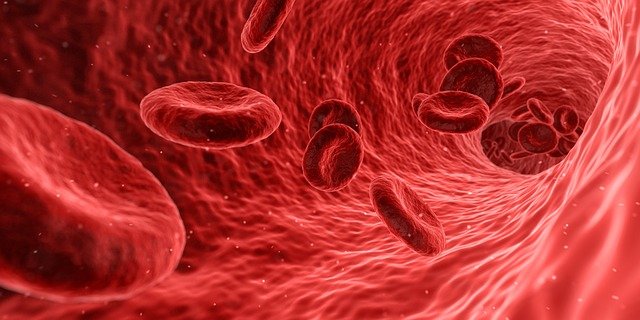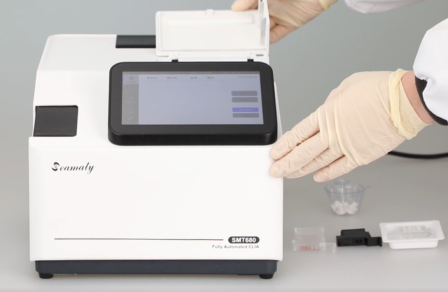Biochemical tests have become an important tool in the diagnosis and treatment of diseases. When you get the results of a biochemistry test, you may not know what it means when you are presented with the various figures. This article shares an analysis of the causes of elevated total bilirubin, a biochemical test.
What is total bilirubin?
Total bilirubin (TBil) is the sum of direct bilirubin and indirect bilirubin. Indirect bilirubin is the bilirubin that is not bound to glucuronic acid. Indirect bilirubin is insoluble in water and cannot be excreted by the kidneys in the urine. Indirect bilirubin is converted in the liver cells and combined with glucuronic acid to form direct bilirubin (conjugated bilirubin).
Direct bilirubin is soluble in water and is excreted in the urine through the kidneys. The liver plays an important role in the metabolism of bilirubin, including the uptake, binding and excretion of unconjugated bilirubin in the blood by hepatocytes. Impairment of any of these processes can cause bilirubin to accumulate in the blood and jaundice to develop.
Bilirubin is a type of bile pigment and is the main pigment in human bile. It includes total bilirubin, direct bilirubin and indirect bilirubin. When red blood cells age, they release haemoglobin, which is metabolised by the body to water-insoluble indirect bilirubin (also known as unconjugated bilirubin).
Indirect bilirubin is metabolised by the liver to water-soluble direct bilirubin (also known as conjugated bilirubin), which is excreted by the kidneys in the urine. Total bilirubin is the sum of direct bilirubin and indirect bilirubin. Bilirubin is an important indicator of liver function and is the main basis for determining jaundice, which helps in the diagnosis of liver and biliary diseases and blood disorders.
High serum bilirubin means that one or more of the serum levels of total bilirubin, direct bilirubin and indirect bilirubin exceeds the normal reference value. A high serum bilirubin is accompanied by corresponding changes in the urine. It can be used to determine the type and degree of jaundice.
The measurement of serum bilirubin is an important test in the examination of liver and biliary function. It can accurately reflect the degree of jaundice and is important for the clinical diagnosis of occult jaundice.
What can cause a high total bilirubin?
Physiological elevation
Physiological jaundice in newborns. It appears 2 to 3 days after birth, peaks in 4 to 6 days and subsides in 7 to 10 days, and lasts longer in premature babies. There are no clinical symptoms other than a slight loss of appetite.
The increase in bilirubin may also be caused by prolonged alcohol consumption and strenuous exercise. The bilirubin increase caused by physiological factors will usually recover on its own after adjustment.
Pathological increases
1. Increase in direct bilirubin
Increased direct bilirubin is mainly seen in obstructive jaundice, hepatocellular jaundice, hepatocellular carcinoma, pancreatic head carcinoma, cholelithiasis, bile duct carcinoma, etc.
Those with predominantly increased direct bilirubin often have symptoms such as fever, abdominal pain and vomiting. Gradual increase in bilirubin concentration, usually > 170 μmol/L, positive urinary bilirubin, reduced or absent urobilinogen in faeces. Alkaline phosphatase is markedly elevated.
2. Indirect bilirubin increase
Commonly seen in acute jaundice, acute hepatic necrosis, chronic active hepatitis, cirrhosis, haemolytic anaemia, blood group incompatibility transfusion, hepatocellular jaundice, severe scalding, septicaemia, malaria, hypersplenism, pernicious anaemia, pearly anemia, lead poisoning, neonatal physiological jaundice, drug-related jaundice, constitutional jaundice, lactational jaundice.
Indirect bilirubin is predominantly elevated, and total serum bilirubin is elevated, with indirect bilirubin accounting for more than 80%. It is mainly seen in haemolytic jaundice, jaundice caused by certain drugs and screening reagents, and physiological jaundice in newborns.
1) If the increase in indirect bilirubin is predominant, there may be blood transfusion, special drugs, infection and family history of haemolysis.
2) Increased total serum bilirubin, usually < 85 μmol/L, with increased indirect bilirubin predominating, accounting for more than 80% of cases.
A pathological increase in bilirubin should be taken seriously and treated in hospital in time to seize the best opportunity for treatment.
Common types of jaundice
1. Haemolytic jaundice: When a large number of red blood cells are destroyed and the indirect bilirubin rises beyond the liver's ability to convert it, causing the indirect bilirubin to remain in the blood, this is called haemolytic jaundice.
2. Hepatocellular jaundice: If there is a problem with the liver, such as hepatitis The liver's ability to convert indirect bilirubin into direct bilirubin is reduced, i.e. the liver cells are damaged. This causes both direct and indirect bilirubin to be high at the same time and total bilirubin to be high.
3. Obstructive jaundice: If there is a problem with the biliary tract, the direct bilirubin cannot be excreted into the intestine and flows backwards into the bloodstream, this is called obstructive jaundice. This means that the direct bilirubin rises, causing the total haemoglobin to be high.
When you find that your total bilirubin is high, it is important that you do not ignore it. It is important to go to a specialist hospital for a timely examination to determine the cause of the high total bilirubin and to receive active treatment.



